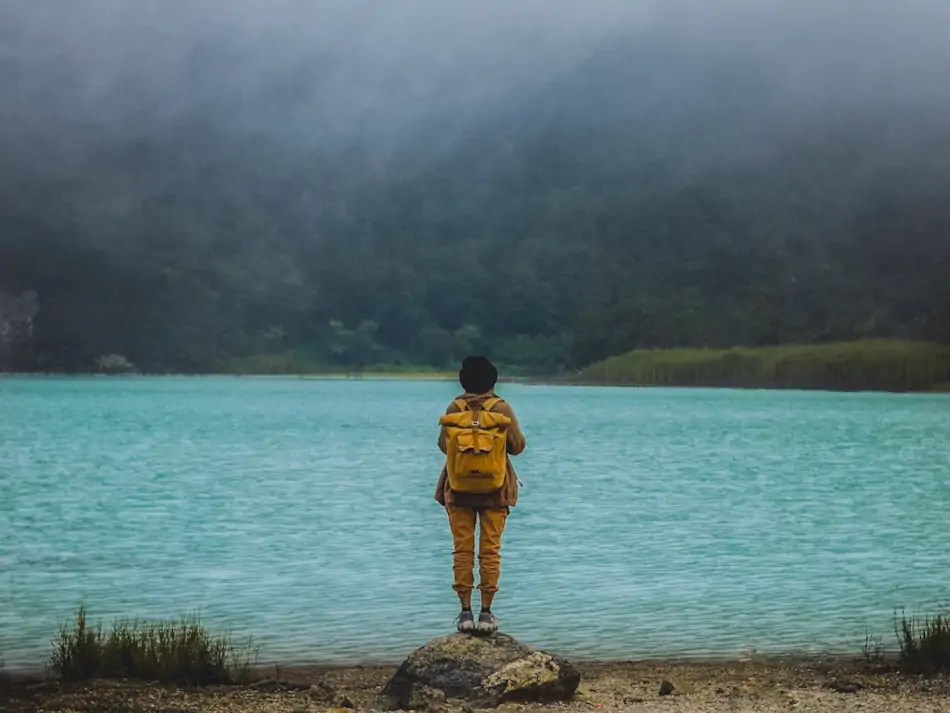The best hiking trails in Europe for adventure seekers

Europe is known for its picturesque landscapes, stunning mountain ranges, and challenging hiking trails. From the towering peaks of the Alps to the scenic hills of Scotland, Europe has something for every level of hiker. Whether you are a beginner or an experienced hiker, there are plenty of trails to explore. In this article, we’ll take a look at the best hiking trails in Europe for adventure seekers, divided into three parts: beginner gliders, advanced gliders, and experienced gliders.
Beginner Gliders
If you’re just getting started with hiking, there are plenty of beginner-friendly trails in Europe that offer stunning views and manageable terrain. Here are a few of the best:
1. The West Highland Way, Scotland
The West Highland Way is a long-distance hiking trail in Scotland that covers a distance of approximately 154 kilometers (96 miles). The trail takes hikers through some of the most breathtaking landscapes in Scotland, including the Scottish Highlands, Loch Lomond, and Glen Coe. Here’s what you can expect to see and experience while hiking the West Highland Way:
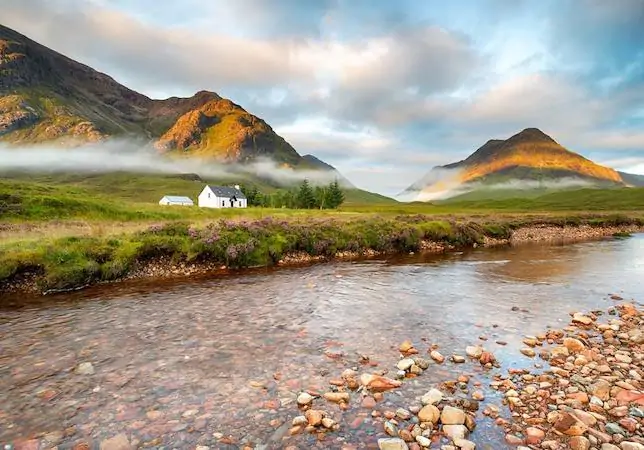
History of the Route
The West Highland Way was first established in the 1980s as a way to promote the beauty of Scotland’s wilderness and to encourage outdoor recreation. Since then, it has become one of the most popular hiking routes in the world, attracting thousands of visitors each year.
Places of Interest
The West Highland Way passes through some of Scotland’s most iconic landscapes, including rugged mountains, vast lochs, and deep glens. Along the trail, hikers will pass through several charming towns and villages, including Milngavie, Drymen, Tyndrum, and Kinlochleven.
One of the highlights of the trail is Loch Lomond, the largest freshwater lake in Great Britain. Hikers will have the opportunity to hike along the banks of the loch and take in its stunning beauty. Another highlight of the trail is the iconic Buachaille Etive Mor mountain, which towers over Glen Coe and is one of the most photographed mountains in Scotland.
What to Expect
Hiking the West Highland Way is a challenging but rewarding experience. The trail covers a wide range of terrain, including rugged mountains, rolling hills, and rocky paths. Hikers will need to be prepared for variable weather conditions, including rain, wind, and snow, even during the summer months.
However, the stunning scenery and the sense of accomplishment make the West Highland Way an unforgettable experience. Hikers will have the opportunity to witness some of the most breathtaking landscapes in Scotland, as well as explore the country’s rich history and culture.
2. Cinque Terre, Italy
The Cinque Terre is a beautiful stretch of coastline in Liguria, Italy, known for its colorful villages, stunning views, and delicious local cuisine. The area consists of five small villages: Monterosso al Mare, Vernazza, Corniglia, Manarola, and Riomaggiore, each with its own unique character and charm. Hiking the Cinque Terre trail is a popular activity, with several paths winding through the rugged terrain and offering spectacular views of the Mediterranean Sea.

History of the Route
The trails of the Cinque Terre were originally built by farmers and fishermen in the 11th century to connect the villages and their surrounding terraced hillsides. These paths allowed for easier access to the fertile farmland and vineyards that are still an important part of the region’s economy today. Over the years, the trails have been improved and expanded, and are now a popular destination for hikers and tourists from around the world.
Places of Interest
Hiking the Cinque Terre trail offers stunning views of the Mediterranean Sea, the picturesque villages, and the terraced hillsides covered in vineyards and olive groves. Along the way, hikers will pass through tunnels, over bridges, and up steep staircases, making the journey both challenging and rewarding.
One of the highlights of the trail is the Via dell’Amore, or the “Lover’s Lane,” which connects the villages of Riomaggiore and Manarola. This paved path is relatively flat and easy, and offers stunning views of the sea and the rugged coastline.
Another popular trail is the Sentiero Azzurro, or the “Blue Trail,” which connects all five villages and is more challenging, with steep climbs and descents. This trail passes through vineyards and olive groves, as well as offering breathtaking views of the Mediterranean Sea.
What to Expect
Hiking the Cinque Terre trail can be challenging, with steep climbs and descents, rocky paths, and narrow walkways. It is important to wear comfortable, sturdy shoes, bring plenty of water and snacks, and be prepared for variable weather conditions.
However, the stunning scenery, charming villages, and delicious local cuisine make the Cinque Terre trail an unforgettable experience. Hikers will have the opportunity to witness some of the most breathtaking landscapes in Italy, as well as explore the region’s rich history and culture.
3. Camino de Santiago, Spain
The Camino de Santiago, also known as the Way of Saint James, is a network of pilgrimage routes that all lead to the city of Santiago de Compostela in Galicia, Spain, where the remains of the apostle Saint James are said to be buried. The most popular and well-known route is the Camino Frances, which starts in the French town of Saint-Jean-Pied-de-Port and covers a distance of over 800 kilometers.
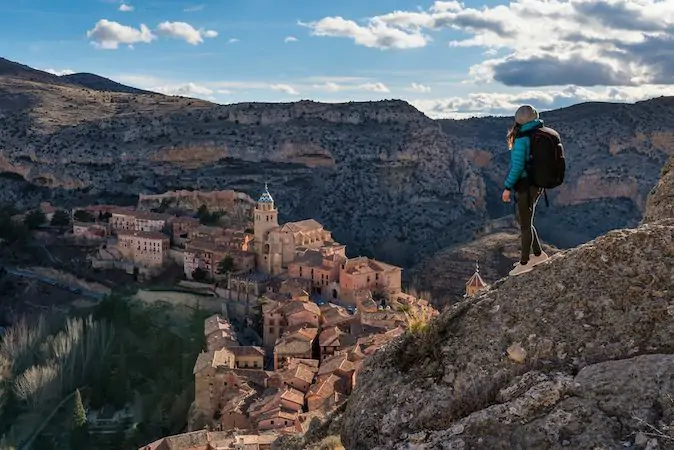
History of the Route
The Camino de Santiago has a long and rich history, dating back over a thousand years. It is said that the apostle Saint James traveled to Spain to spread Christianity, and after his death, his remains were miraculously discovered in the 9th century by a hermit named Pelayo. The discovery led to the construction of a shrine in Santiago de Compostela and the establishment of the pilgrimage route. The Camino became one of the most important Christian pilgrimages in Europe, with thousands of pilgrims making the journey each year.
Places of Interest
The Camino de Santiago passes through a variety of landscapes and terrain, from the mountains of the Pyrenees to the rolling hills of Galicia. Along the way, pilgrims will pass through small villages and towns, each with its own unique history and culture.
One of the most iconic sights along the route is the Cruz de Ferro, a tall wooden cross that marks the highest point on the Camino. Pilgrims traditionally leave a stone at the base of the cross as a symbol of their journey and a way to lighten their load.
The city of Burgos is another highlight of the Camino, with its stunning cathedral and medieval architecture. The town of Leon is also worth a visit, with its impressive Gothic cathedral and charming historic center.
What to Expect
Hiking the Camino de Santiago can be a physically and emotionally challenging experience, with long days of walking, unpredictable weather, and the physical demands of carrying a backpack. However, the rewards of the journey are many, including the opportunity to meet people from all over the world, experience the rich history and culture of Spain, and find a deeper connection with oneself and one’s spirituality.
It’s important to be prepared for the journey, both physically and mentally. This may include training for the physical demands of the hike, packing wisely, and being open to the challenges and joys of the journey.
Advanced Gliders
For those who are ready for a more challenging hike, Europe has plenty of options. Here are a few of the best advanced hiking trails:
1. Tour du Mont Blanc, France, Italy, and Switzerland
The Tour du Mont Blanc is a famous hiking route that circles the Mont Blanc massif, passing through France, Italy, and Switzerland. It is a challenging and rewarding trail, covering over 170 kilometers and reaching an elevation of 2,500 meters at its highest point.
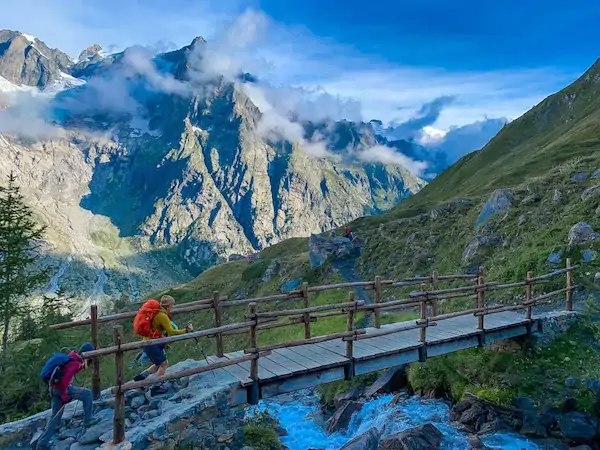
History of the Route
The Tour du Mont Blanc was first established as a hiking route in the early 20th century, and has since become one of the most popular long-distance hikes in Europe. It was originally used as a trade route between Italy and France, and later became a popular destination for mountaineers and hikers.
Places of Interest
The Tour du Mont Blanc passes through stunning alpine landscapes, with snow-capped peaks, glaciers, and meadows full of wildflowers. The trail also takes hikers through charming alpine villages, each with its own unique culture and history.
One of the highlights of the route is the stunning view of Mont Blanc, the highest mountain in the Alps. The route also passes through the Aiguilles Rouges Natural Reserve, home to a diverse array of flora and fauna.
In Italy, hikers will pass through the picturesque Val Ferret, with its stunning views of the Grandes Jorasses and the Italian side of Mont Blanc. In Switzerland, hikers can take a detour to the charming village of Champex-Lac, known for its beautiful lake and traditional Swiss architecture.
What to Expect
The Tour du Mont Blanc is a challenging hike that requires a good level of fitness and preparation. The trail is well-marked and maintained, but hikers should be prepared for unpredictable weather conditions, steep ascents and descents, and carrying a heavy backpack.
It is recommended to hike the trail in the summer months when the weather is generally mild and the trail is more accessible. Accommodations along the route range from basic mountain huts to luxury hotels, and hikers should plan their itinerary accordingly.
2. GR20, Corsica
The GR20 is a famous long-distance hiking trail in Corsica, a beautiful island in the Mediterranean Sea that belongs to France. It is widely considered one of the toughest long-distance hikes in Europe, covering 180 kilometers in 15 days with more than 10,000 meters of elevation gain.
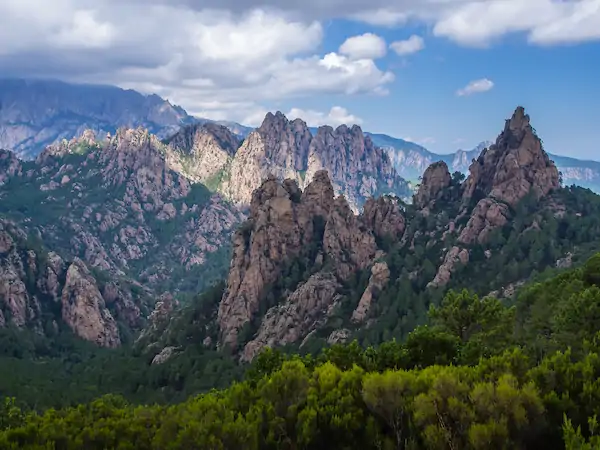
History of the Route
The GR20 was first created in the 1970s as part of a plan to connect Corsica’s high mountain ranges. The trail takes hikers through some of Corsica’s most beautiful and rugged landscapes, passing through granite peaks, alpine lakes, and dense forests.
Places of Interest
The GR20 passes through some of the most stunning natural landscapes in Europe, including the rugged mountains of the Corsican interior and the stunning coastline of the Mediterranean. Along the way, hikers will encounter beautiful alpine lakes, mountain streams, and deep gorges.
One of the highlights of the GR20 is the stunning view of Monte Cinto, the highest mountain in Corsica. The trail also passes through the UNESCO World Heritage site of the Scandola Nature Reserve, a stunningly beautiful area of rocky cliffs, hidden coves, and crystal-clear waters.
What to Expect
The GR20 is a very challenging hike that requires a good level of fitness and preparation. The trail is marked by red-and-white painted markers and is generally well-maintained, but hikers should be prepared for unpredictable weather conditions, steep ascents and descents, and carrying a heavy backpack.
Accommodations along the trail range from simple mountain huts to more comfortable refuges with hot showers and food, but hikers should plan their itinerary carefully to ensure they have enough time to complete the trail.
3. Rota Vicentina, Portugal
The Rota Vicentina is a network of hiking trails in southwestern Portugal, stretching over 400 kilometers along the rugged coastline of the Alentejo and Algarve regions. The trails offer a unique combination of stunning natural beauty, rich cultural heritage, and a peaceful and unspoiled way of life.
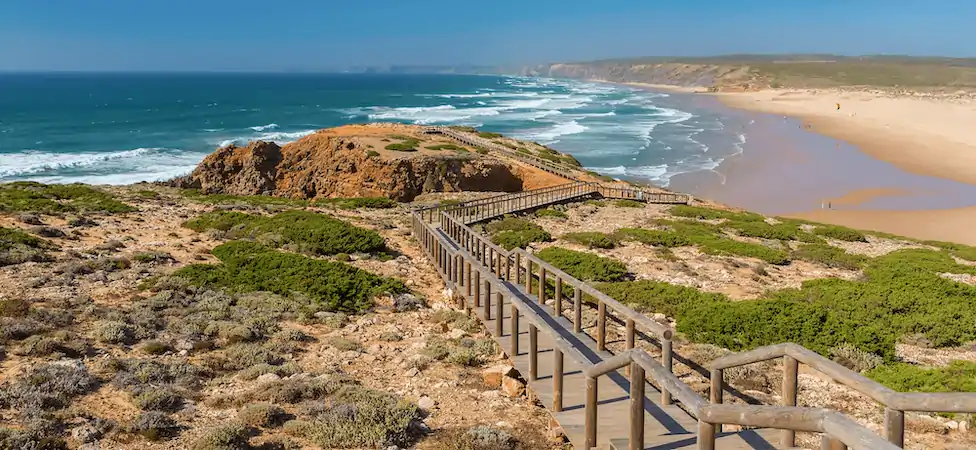
History of the Route
The Rota Vicentina was created in 2012 as a way to promote sustainable tourism in the region and to preserve the natural and cultural heritage of the area. The trails follow ancient paths used by local people for centuries, connecting traditional fishing villages, historic towns, and stunning natural landscapes.
Places of Interest
The Rota Vicentina is divided into two main sections: the Fishermen’s Trail and the Historical Way. The Fishermen’s Trail is a rugged and wild coastal trail that follows the Atlantic coastline, passing through dramatic cliffs, pristine beaches, and traditional fishing villages. Hikers can enjoy stunning views of the ocean, watch fishermen hauling in their daily catch, and taste fresh seafood in local restaurants.
The Historical Way is a quieter and more rural trail that passes through traditional farming villages, historic towns, and unspoiled countryside. Hikers can explore the rich cultural heritage of the region, including the whitewashed houses of the Alentejo, the Moorish influences in the Algarve, and the ancient megalithic sites that dot the landscape.
What to Expect
The Rota Vicentina is a well-marked trail with a variety of options for hikers of all levels. The Fishermen’s Trail can be challenging, with steep ascents and descents and some sections that require careful navigation, while the Historical Way is generally more moderate.
Accommodations along the trail range from simple campgrounds and hostels to more luxurious guesthouses and hotels. Hikers can also enjoy the local cuisine, which includes fresh seafood, local cheeses, and delicious wines from the Alentejo and Algarve regions.
Experienced Gliders
For those who have experienced hikers looking for a real challenge, there are plenty of options in Europe. Here are a few of the best:
1. Alta Via 1, Italy
The Alta Via 1 is a famous long-distance hiking trail that runs through the stunning Dolomite Mountains in Northern Italy. The trail covers a distance of approximately 120 kilometers (75 miles) and takes an average of 8-10 days to complete. Here’s what you can expect to see and experience while hiking the Alta Via 1:
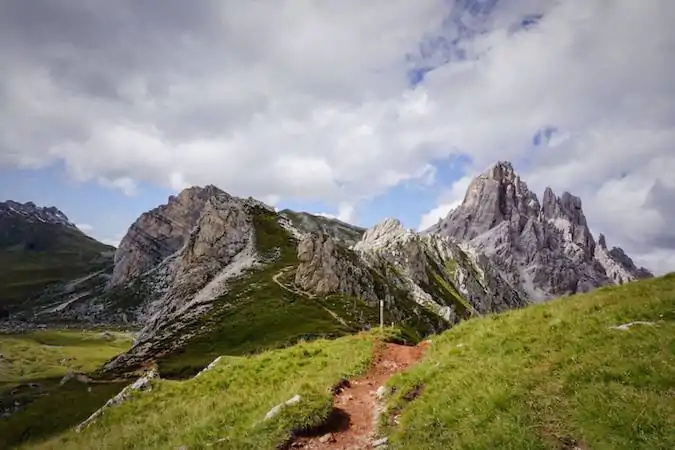
History of the Route
The Alta Via 1 was established in the 1970s as a way to promote tourism in the Dolomite Mountains. The route was designed to showcase the beauty of the area and the cultural heritage of the local communities. Today, the Alta Via 1 is one of the most popular hiking trails in Italy and is known for its stunning views and challenging terrain.
Places of Interest
The Alta Via 1 passes through several picturesque villages, including Cortina d’Ampezzo, the “Queen of the Dolomites.” Cortina d’Ampezzo is a popular ski resort town and has been a favorite destination for travelers since the 19th century. The town is known for its stunning mountain views, quaint shops, and excellent restaurants.
The trail also passes by the Tre Cime di Lavaredo, or the Three Peaks of Lavaredo. These three distinctive peaks are some of the most recognizable landmarks in the Dolomites and offer stunning views from all angles. The peaks are popular among rock climbers and hikers alike, and are a must-see for anyone hiking the Alta Via 1.
Another highlight of the trail is the Puez-Odle Nature Park, a protected area known for its unique geology and diverse flora and fauna. The park is home to several endangered species, including the golden eagle and the alpine ibex, and offers breathtaking views of the surrounding mountains and valleys.
What to Expect
Hiking the Alta Via 1 is a challenging but rewarding experience. The trail covers steep ascents and descents, narrow ridges, and rocky terrain. Hikers should be prepared for variable weather conditions, including rain, snow, and wind. However, the stunning scenery and sense of accomplishment make it all worthwhile.
In conclusion, the Alta Via 1 is a must-do hike for any serious hiker. With its stunning scenery, challenging terrain, and cultural significance, it’s no wonder that it’s one of the most popular hiking trails in Italy. So pack your bags, lace up your hiking boots, and get ready for an adventure of a lifetime!
2. Laugavegurinn, Iceland
The Laugavegurinn Trail is a world-renowned hiking route in Iceland that spans approximately 55 kilometers (34 miles) and takes an average of 4-5 days to complete. Here’s what you can expect to see and experience while hiking the Laugavegurinn Trail:
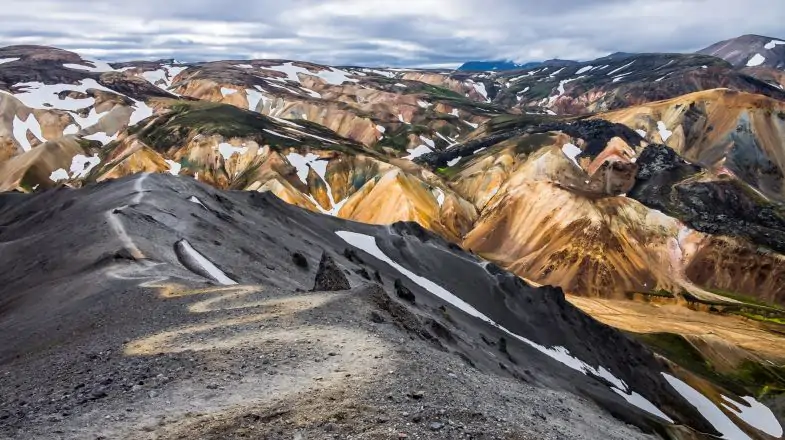
History of the Route
The Laugavegurinn Trail was established in the late 1970s as a way to promote hiking and outdoor tourism in Iceland. The trail passes through some of the most spectacular landscapes in the country, including glaciers, hot springs, and volcanoes. Today, the Laugavegurinn Trail is one of the most popular hiking trails in Iceland and draws hikers from all over the world.
Places of Interest
The Laugavegurinn Trail takes hikers through a variety of stunning landscapes, including mountains, glaciers, hot springs, and valleys. One of the highlights of the trail is the Landmannalaugar geothermal area, a unique region with colorful rhyolite mountains and bubbling hot springs. The area is also home to the famous Laugavegur Hot Springs, which are a popular destination for hikers looking to soak in the natural hot pools.
Another highlight of the trail is the Þórsmörk Valley, a breathtakingly beautiful region with rugged mountains and glacial rivers. The valley is home to several hiking trails, including the Fimmvörðuháls Trail, which takes hikers past the Eyjafjallajökull volcano, which famously erupted in 2010.
What to Expect
Hiking the Laugavegurinn Trail is a challenging but rewarding experience. The trail covers a variety of terrain, including steep ascents and descents, rocky trails, and river crossings. Hikers should be prepared for variable weather conditions, including rain, wind, and even snow, even during the summer months. However, the stunning scenery and sense of accomplishment make it all worthwhile.
3. Haute Route, France and Switzerland
The Haute Route is a classic long-distance hiking trail that traverses the French and Swiss Alps. The route covers a distance of approximately 180 kilometers (112 miles) and takes hikers about two weeks to complete. Here’s what you can expect to see and experience while hiking the Haute Route:

History of the Route
The Haute Route was first established in the 19th century as a mountaineering route between the two alpine centers of Chamonix, France, and Zermatt, Switzerland. The route quickly gained popularity among mountaineers and hikers, and today it’s considered one of the most iconic hiking routes in the world.
Places of Interest
The Haute Route takes hikers through some of the most spectacular scenery in the French and Swiss Alps. The trail covers a wide range of terrain, including alpine meadows, glacial valleys, and rocky ridges. Some of the highlights of the route include the Mont Blanc massif, the Matterhorn, and the stunning Arolla Glacier.
Hikers on the Haute Route will also pass through several charming alpine villages and towns, including Chamonix, Les Houches, and Verbier. These towns offer opportunities to rest and resupply, as well as explore local culture and cuisine.
What to Expect
Hiking the Haute Route is a challenging and physically demanding experience. The trail covers steep and rocky terrain, and hikers will need to be prepared for significant elevation gain and loss. Hikers will also need to be prepared for variable weather conditions, including rain, wind, and snow, even during the summer months.
However, the stunning scenery and the sense of accomplishment make the Haute Route an unforgettable experience. Hikers will have the opportunity to witness some of the most breathtaking alpine landscapes in the world, as well as test their endurance and skills.
Tips for hikers

- Plan ahead: Before embarking on a hiking trip, it’s important to plan ahead. Make sure you have a detailed map of the area, know the route you will be taking, and check the weather forecast to ensure that you’re prepared for any potential conditions. It’s also important to let someone know your itinerary in case of emergency.
- Wear appropriate clothing: Dress in layers and wear clothing made of quick-drying and moisture-wicking materials to stay comfortable and dry. Make sure to wear comfortable, sturdy shoes or hiking boots with good traction.
- Stay hydrated: It’s important to drink plenty of water before, during, and after your hike to avoid dehydration. Bring enough water with you, and consider packing electrolyte supplements or sports drinks to replenish lost fluids and minerals.
- Respect nature: Be respectful of the natural environment and leave no trace behind. Pack out all trash and avoid damaging vegetation. Stay on marked trails to avoid disturbing wildlife habitats. Keep an eye out for wildlife and respect their habitats. Avoid getting too close to animals, and never feed them.
- Know your limits: Be honest with yourself about your physical abilities and the difficulty level of the trail you choose. It’s important to challenge yourself, but not to the point of exhaustion or injury. Take breaks when needed and listen to your body.
- Stay on track: Pay attention to trail markers and stay on designated paths. Straying off the trail can be dangerous and damaging to the environment.
- Be prepared for emergencies: Accidents can happen, so make sure you’re prepared for emergencies. Carry a charged mobile phone and know the emergency services number for the area you’re hiking in. Have a plan in place in case of an emergency, such as a sprain or a break.
- Enjoy the journey: Finally, don’t forget to enjoy the journey! Take in the beautiful scenery and the fresh air, and take breaks to appreciate the views. Hiking is a great way to connect with nature and disconnect from the stresses of daily life.
By keeping these tips in mind, hikers can have a safe and enjoyable experience on their hiking trips. Happy hiking!
Conclusion
In conclusion, Europe has a vast array of hiking trails for adventure seekers of all levels. Whether you’re a beginner glider, an advanced glider, or an experienced glider, there are plenty of options to choose from. Each trail offers its own unique beauty and challenges, but all of them are sure to provide you with an unforgettable hiking experience. So pack your bags, lace up your hiking boots, and get ready to hit the trails!
